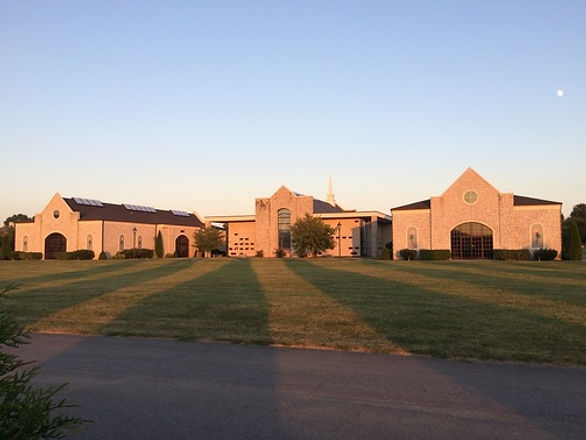MAUSOLEUMS

Mausoleums
Mausoleums offer an enduring peace of mind, preserving the memory, sanctity, and integrity of your loved ones. A mausoleum crypt is above ground and offers secure protection. It remains clean and completely dry in a controlled environment that allows visitation in a climate controlled atmosphere. A community mausoleum entombs large numbers of people. You choose a crypt space at a desired location and level. Opportunities exist for crypt spaces accessed from inside only or located on the structure's exterior. Likewise, there are single or companion crypts, which can accommodate two individuals.
Memorializing a community mausoleum crypt involves your choice of a "crypt plate," a flat marker made of various bronze and granite materials, installed on the front face of the crypt. This can be inscribed with specific personal information (similar to what would be found on a grave memorial/monument).

Mausoleum Crypt Price List (2025)
*Estimated Total Starting Prices
Please contact the office for details
Main Chapel/Office Building
Single (Inside & Outside):
$9,800.00 - $10,300.00
Double (Inside & Outside):
$15,600.00 - $16,600.00
Monocacy/Potomac Buildings
Single:
$10,400.00 - $11,200.00
Double:
$16,400.00 - $17,200.00
*Price includes-- deed, opening & closing, bronze plaque & taxes

Mausoleum burial is not something new as it has been around for thousands of years. The ancient Egyptians are some of the most notable who used this practice. The pyramids of Egypt contain the remains of pharaohs and their consorts and have endured through the ages. Tombs and crypts exists in the basements of famous churches and cathedrals across Europe holding the remains of kings, queens, nobleman and religious leaders of note. Some of the most well-known monuments in history are mausoleums, containing concrete or stone crypts to store the caskets. Famous above-ground entombment sites include: the Tomb of the Unknown Soldier, the Taj Mahal, Westminster Abbey and Grant's Tomb.

For the first century and a half, only a few private family tombs/crypts existed here at Mount Olivet. One was built by James Whitehill (1798-1874), a successful Frederick businessman who certainly knew the art of burial. He conducted a successful undertaking business that provided coffins, wooden headboards, and hospital furnishings during the American Civil War. His offices also served as an embalming station after the battles of South Mountain and Antietam. Whitehill was one of the original trustees of the cemetery, and is buried here with his wife and infant child.
The Roelkey family crypt contains 12 burial vaults. Eleven individuals reside within, including family patriarch John Roelkey (1823-1827), a German immigrant who worked for a local foundry, but gave up his vocation to devote more time to farming. He is known to have forged his own plows, and may have had a hand in the ornamental wrought iron gates adorning the front of the crypt.
In 1996, Mount Olivet opened the Chapel Mausoleum, a non-private, community crypt with a capacity of 600 interment spaces. Two others mausoleum buildings were opened in 2009 and aptly named for local waterways: Monocacy and Potomac. Water is a common symbolic representation of eternal life in Scripture across faith traditions. The context of using these specific river names calls to mind the often used phrase "river of life" which is derived from the Bible's, Revelation 22:1–2 , “the river of the water of life, as clear as crystal, flowing from the throne of God and of the Lamb.” The “water of life” referred to here does not have to be considered physical water as we know it. Rather, the water flowing from the throne is probably symbolic of the water of eternal life, crystal clear to reflect the glory of God in a dazzling, never-ending stream.

The Chapel Complex at Mount Olivet Cemetery is the largest in western Maryland, with the capacity to allow for over 1,600 entombments and 1,300 inurnments (niche spaces). The Chapel Mausoleum building (opened in 1997) is built of the finest materials and care to detail. This structure has also been the site of several large memorial services, having the ability to accommodate 150 guests. The later mausoleum buildings (Potomac and Monocacy) were added in 2009 and offer additional entombment and inurnment choices for cemetery customers.
Mausoleum burial (entombment) has often been considered too expensive and only affordable by the wealthy. In comparison to a traditional burial lot, mausoleums offer a less expensive alternative which does not require the cost of a burial vault, and pricier monument vs. a crypt/niche plaque.
Our cemetery experts are here to help you
515 S Market St, Frederick, MD 21701, USA

master%20jpg.jpg)



